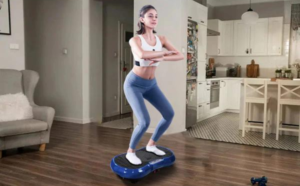Recovering from an injury can be a challenging process. It often requires a delicate balance between rest, gentle movement, and gradually rebuilding strength. Fitness machines play a crucial role in this journey, providing a safe and controlled environment for rehabilitation. In this article, we’ll explore how fitness machines can aid in injury recovery and rehabilitation, the best types of equipment to use, and what you should consider when creating a rehabilitation plan.
1. Why Fitness Machines Are Essential for Rehabilitation
Fitness machines are designed to target specific muscle groups, control movement, and limit the risk of overexertion. This makes them invaluable tools for rehabilitation, where safety and precision are key. Here are a few reasons why fitness machines are essential for injury recovery:
- Controlled Movements: Machines allow you to perform exercises with guided movements, reducing the risk of improper form that could aggravate an injury.
- Adjustable Resistance: Most fitness machines come with adjustable resistance, letting you increase or decrease intensity as you progress in your recovery.
- Low-Impact Options: Many machines offer low-impact exercises that minimize stress on joints and injured areas, aiding in a smoother recovery.
2. Best Fitness Machines for Injury Recovery
Different types of injuries require different recovery strategies. Here are some of the best fitness machines commonly recommended by physical therapists and health experts for rehabilitation:
a. Stationary Bikes
- Ideal For: Knee, hip, and lower-body injuries.
- Benefits: Stationary bikes provide low-impact cardiovascular exercise, helping to maintain mobility and strength without putting excessive pressure on joints. They allow for adjustable resistance, making them suitable for gradual progression in recovery.
b. Elliptical Machines
- Ideal For: Lower back, hip, knee, and ankle injuries.
- Benefits: Ellipticals offer a full-body, low-impact workout. The smooth, gliding motion reduces joint stress, making them perfect for regaining balance, flexibility, and cardiovascular fitness during rehabilitation.
c. Rowing Machines
- Ideal For: Shoulder, back, and core rehabilitation.
- Benefits: Rowing machines provide a full-body workout with a focus on strengthening the upper body and core. They promote smooth, controlled movements that can aid in muscle recovery and rebuilding strength without causing strain.
d. Vibration Plates
- Ideal For: Enhancing circulation and muscle activation.
- Benefits: Vibration plates stimulate muscle contractions, promoting circulation and aiding in flexibility. They are especially useful for improving muscle tone and reducing stiffness in recovering areas.
e. Cable Machines
- Ideal For: Shoulder, arm, and upper-body injuries.
- Benefits: Cable machines are versatile and allow you to perform a wide range of strength exercises. They offer controlled resistance, reducing the risk of overextension or improper form during recovery.
3. Key Benefits of Using Fitness Machines in Rehabilitation
Fitness machines offer several benefits that can significantly enhance the recovery process. Here are some key advantages:
- Gradual Progression: Machines enable you to start with minimal resistance and gradually increase it as you regain strength, avoiding sudden stress on injured areas.
- Focus on Targeted Muscle Groups: Machines can isolate specific muscle groups, allowing for targeted exercises that help rehabilitate weakened muscles without overloading other parts of the body.
- Improved Range of Motion: Many fitness machines are designed to support a full range of motion, helping you regain flexibility and reduce stiffness over time.
- Enhanced Stability: Machines provide stability, which is crucial for individuals recovering from an injury. The added support helps prevent falls or re-injury during exercises.
4. Tips for Using Fitness Machines Safely During Recovery
When using fitness machines for rehabilitation, safety is paramount. Here are some tips to ensure a smooth and effective recovery:
- Consult with a Professional: Always consult with a physical therapist or medical professional before starting any exercise program, especially if you are recovering from an injury.
- Start Slowly: Begin with low resistance and short sessions. Gradually increase the intensity and duration based on how your body responds.
- Listen to Your Body: Pay attention to any discomfort or pain during exercise. If you feel pain, stop immediately and consult your therapist for guidance.
- Focus on Form: Proper form is essential for effective recovery. Machines can help guide your movements, but it’s important to focus on maintaining good posture and alignment during each exercise.
- Monitor Progress: Keep track of your progress by noting the resistance level, repetitions, and how your body feels after each session. Adjust your routine based on improvements or setbacks.
5. Creating a Balanced Rehabilitation Routine
While fitness machines play a significant role in injury recovery, it’s essential to incorporate a balanced approach that includes other aspects of rehabilitation:
- Stretching: Include gentle stretching exercises to improve flexibility and reduce muscle tightness. Stretching can complement machine-based workouts by enhancing mobility.
- Strength Training: Use machines to focus on strength training, targeting weakened muscles with controlled exercises.
- Cardiovascular Exercise: Machines like stationary bikes and ellipticals can help maintain cardiovascular health without putting too much strain on injured areas.
- Rest and Recovery: Allow your body time to rest and recover between sessions. Adequate rest is crucial to avoiding setbacks in the healing process.
6. Choosing the Right Fitness Machine for Your Injury
Selecting the right fitness machine depends on the type and severity of your injury. Here’s a quick guide to help you choose:
- For Joint Pain: Look for low-impact machines like ellipticals and stationary bikes.
- For Upper Body Injuries: Use cable machines or rowing machines with a focus on gentle upper body movements.
- For Lower Body Injuries: Consider stationary bikes, ellipticals, or vibration plates to build strength gradually without high impact.
Conclusion: Fitness Machines as a Partner in Recovery
Fitness machines are valuable tools in the recovery process, offering a safe and structured way to rebuild strength, flexibility, and confidence. Whether you’re recovering from a minor injury or a more severe condition, the right fitness machine can make a significant difference. Remember to consult with a healthcare professional, listen to your body, and gradually increase intensity to ensure a successful recovery journey.



